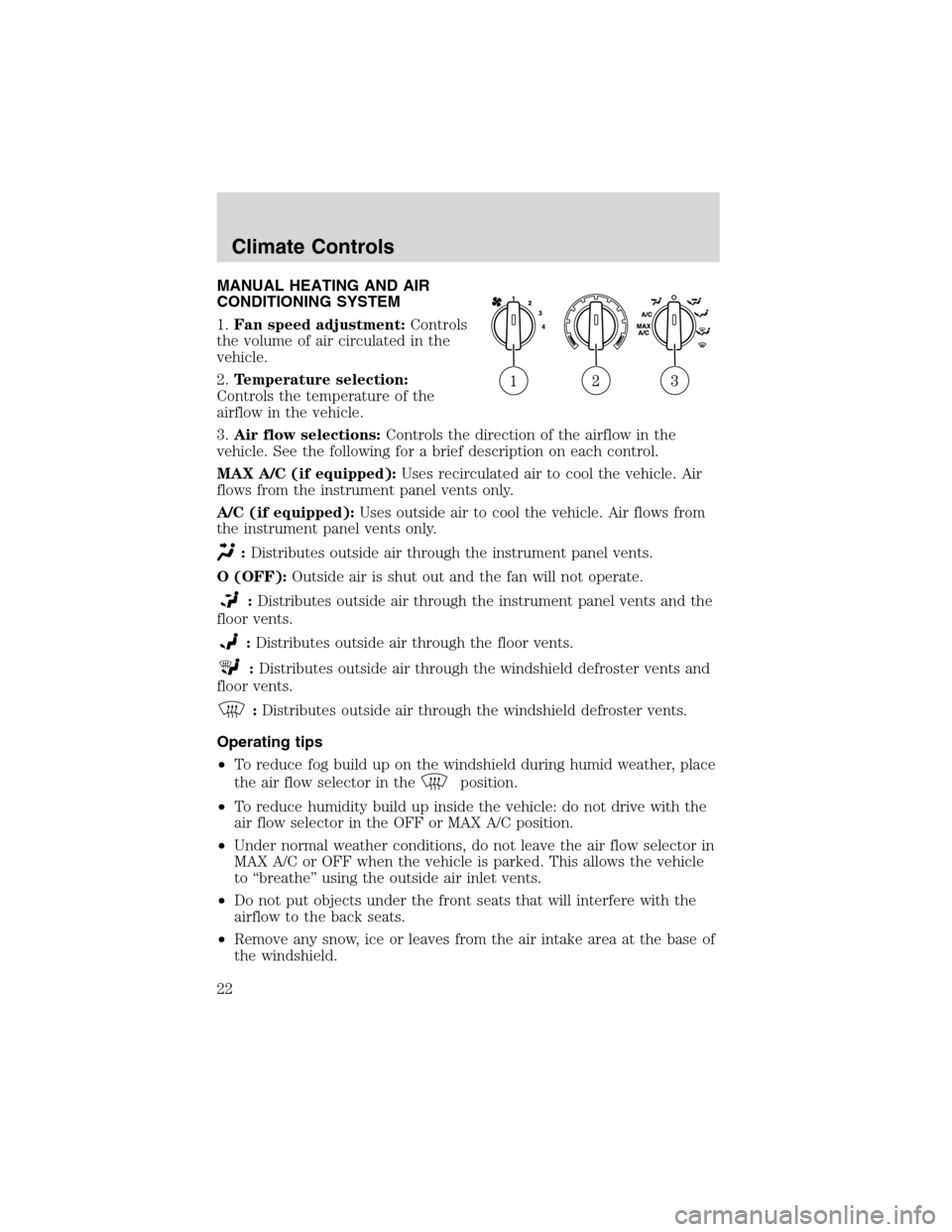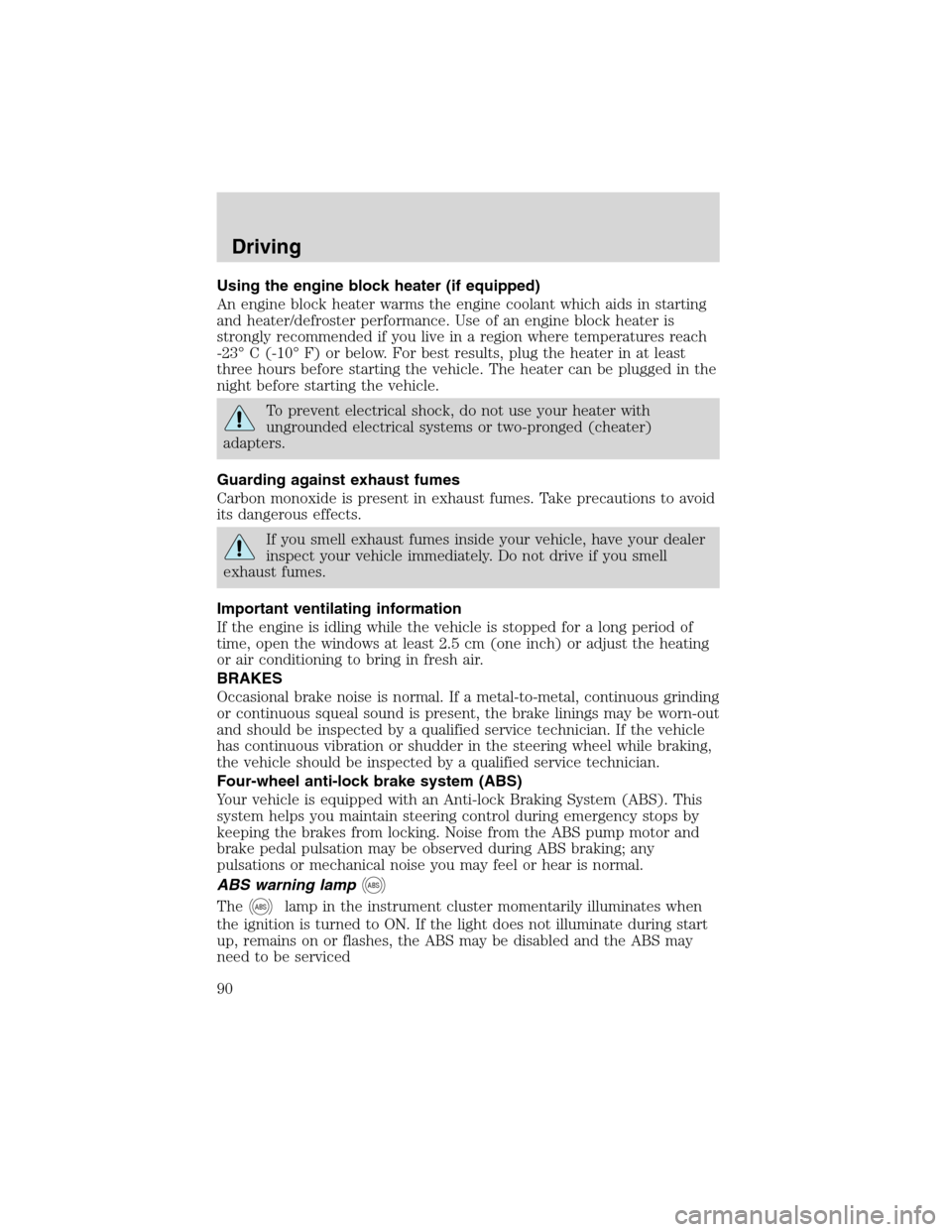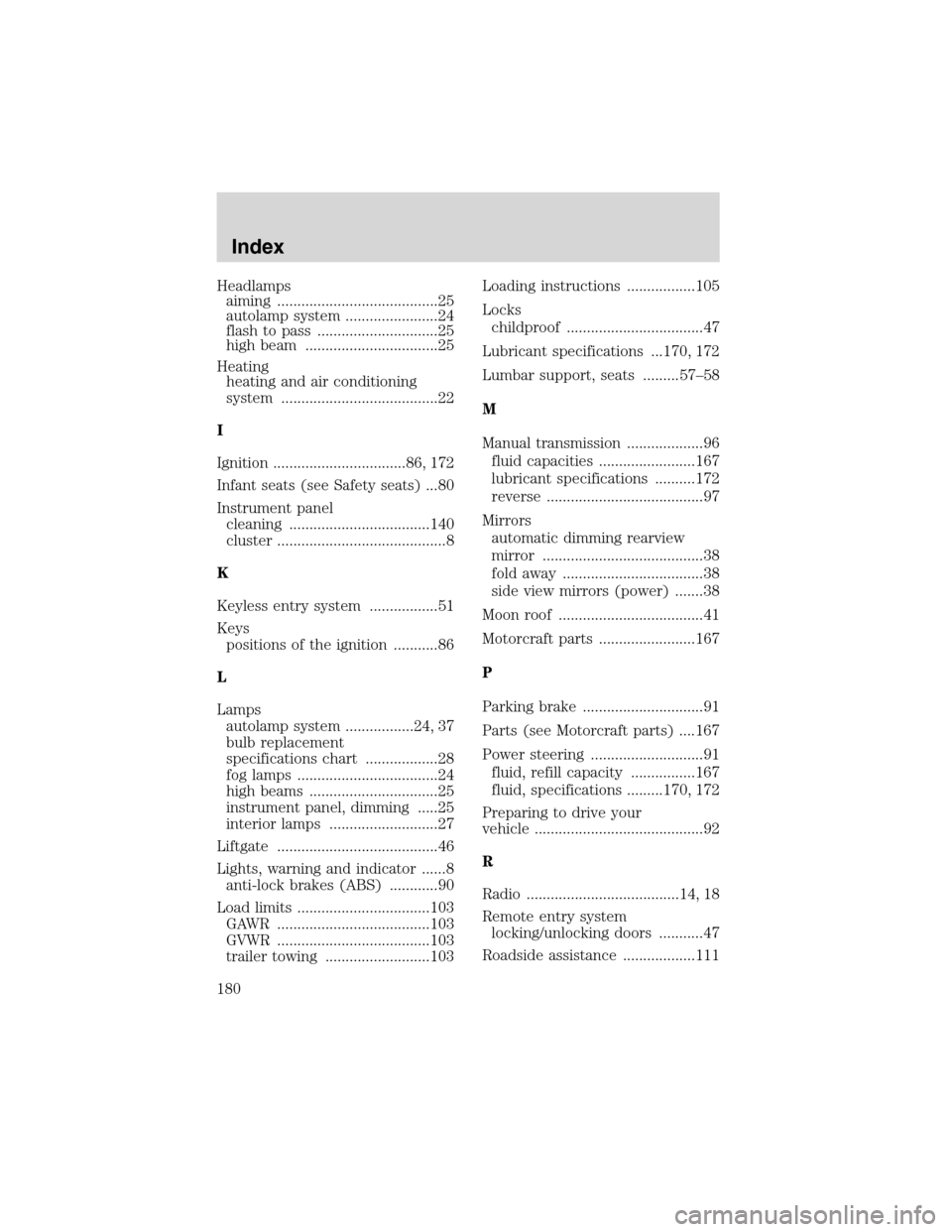Page 1 of 184
Introduction 4
Instrument Cluster 8
Warning and control lights 8
Gauges 11
Entertainment Systems 14
AM/FM stereo cassette with CD 14
AM/FM stereo with CD 18
Rear seat controls 21
Climate Controls 22
Manual heating and air conditioning 22
Rear window defroster 23
Lights 24
Driver Controls 32
Windshield wiper/washer control 32
Power windows 37
Mirrors 38
Speed control 39
Locks and Security 47
Keys 47
Locks 47
Anti-theft system 53
Table of Contents
1
Page 11 of 184
GAUGES
Speedometer:Indicates the
current vehicle speed.
Engine coolant temperature
gauge:Indicates engine coolant
temperature. At normal operating
temperature, the needle will be in
the normal range (between“H”and
“C”). If it enters the red section, the
engine is overheating. Stop the
vehicle as soon as safely possible,
switch off the engine and let the
engine cool.
Never remove the coolant reservoir cap while the engine is
running or hot.
!
C12345
6
RPMx1000
ABS
CHECK
ENGINE
EFH
H
H
PRN D 2 1THEFT
SPEED
CONT
4WD
HIGH
4WD
LOW
O/D
OFF
MPH 2060
4080
km/h
00
1
20
160100
140
180
20
DOOR
AJAR
CHECK
GAGE
BRAKE
CHECK
FUEL
CAP
C
H
Instrument Cluster
11
Page 22 of 184

MANUAL HEATING AND AIR
CONDITIONING SYSTEM
1.Fan speed adjustment:Controls
the volume of air circulated in the
vehicle.
2.Temperature selection:
Controls the temperature of the
airflow in the vehicle.
3.Air flow selections:Controls the direction of the airflow in the
vehicle. See the following for a brief description on each control.
MAX A/C (if equipped):Uses recirculated air to cool the vehicle. Air
flows from the instrument panel vents only.
A/C (if equipped):Uses outside air to cool the vehicle. Air flows from
the instrument panel vents only.
:Distributes outside air through the instrument panel vents.
O (OFF):Outside air is shut out and the fan will not operate.
:Distributes outside air through the instrument panel vents and the
floor vents.
:Distributes outside air through the floor vents.
:Distributes outside air through the windshield defroster vents and
floor vents.
:Distributes outside air through the windshield defroster vents.
Operating tips
•To reduce fog build up on the windshield during humid weather, place
the air flow selector in the
position.
•To reduce humidity build up inside the vehicle: do not drive with the
air flow selector in the OFF or MAX A/C position.
•Under normal weather conditions, do not leave the air flow selector in
MAX A/C or OFF when the vehicle is parked. This allows the vehicle
to“breathe”using the outside air inlet vents.
•Do not put objects under the front seats that will interfere with the
airflow to the back seats.
•Remove any snow, ice or leaves from the air intake area at the base of
the windshield.
Climate Controls
22
Page 90 of 184

Using the engine block heater (if equipped)
An engine block heater warms the engine coolant which aids in starting
and heater/defroster performance. Use of an engine block heater is
strongly recommended if you live in a region where temperatures reach
-23°C (-10°F) or below. For best results, plug the heater in at least
three hours before starting the vehicle. The heater can be plugged in the
night before starting the vehicle.
To prevent electrical shock, do not use your heater with
ungrounded electrical systems or two-pronged (cheater)
adapters.
Guarding against exhaust fumes
Carbon monoxide is present in exhaust fumes. Take precautions to avoid
its dangerous effects.
If you smell exhaust fumes inside your vehicle, have your dealer
inspect your vehicle immediately. Do not drive if you smell
exhaust fumes.
Important ventilating information
If the engine is idling while the vehicle is stopped for a long period of
time, open the windows at least 2.5 cm (one inch) or adjust the heating
or air conditioning to bring in fresh air.
BRAKES
Occasional brake noise is normal. If a metal-to-metal, continuous grinding
or continuous squeal sound is present, the brake linings may be worn-out
and should be inspected by a qualified service technician. If the vehicle
has continuous vibration or shudder in the steering wheel while braking,
the vehicle should be inspected by a qualified service technician.
Four-wheel anti-lock brake system (ABS)
Your vehicle is equipped with an Anti-lock Braking System (ABS). This
system helps you maintain steering control during emergency stops by
keeping the brakes from locking. Noise from the ABS pump motor and
brake pedal pulsation may be observed during ABS braking; any
pulsations or mechanical noise you may feel or hear is normal.
ABS warning lamp
ABS
TheABSlamp in the instrument cluster momentarily illuminates when
the ignition is turned to ON. If the light does not illuminate during start
up, remains on or flashes, the ABS may be disabled and the ABS may
need to be serviced
Driving
90
Page 160 of 184
8. Remove the dipstick and inspect
the fluid level. Level should be in
the cross-hatched area.
9. If necessary, add fluid in 250ml (1/2 pint) increments through the filler
tube until the level is correct at normal operating temperatures. Refer to
theLubricant Specificationssection in this chapter for the correct fluid
type. The use of any other non-approved fluid may cause internal
transmission damage.
10. Fluid can be checked at ambient
temperatures between 10–30°C
(50–95°F). DO NOT ADD fluid until
the transmission is at normal
operating temperatures or the transmission will be overfilled.
Low fluid level
Do not drive the vehicle if the fluid
level is at or below the bottom of
the dipstick.
High fluid level
Fluid levels above the safe range
may cause overheating, shift and/or
engagement concerns and internal
transmission damage. If an overfill
condition occurs, excess fluid should
be removed by a qualified technician.
Maintenance and Specifications
160
Page 180 of 184

Headlamps
aiming ........................................25
autolamp system .......................24
flash to pass ..............................25
high beam .................................25
Heating
heating and air conditioning
system .......................................22
I
Ignition .................................86, 172
Infant seats (see Safety seats)...80
Instrument panel
cleaning ...................................140
cluster ..........................................8
K
Keyless entry system .................51
Keys
positions of the ignition ...........86
L
Lamps
autolamp system .................24, 37
bulb replacement
specifications chart ..................28
fog lamps ...................................24
high beams ................................25
instrument panel, dimming .....25
interior lamps ...........................27
Liftgate ........................................46
Lights, warning and indicator ......8
anti-lock brakes (ABS) ............90
Load limits .................................103
GAWR ......................................103
GVWR ......................................103
trailer towing ..........................103Loading instructions .................105
Locks
childproof ..................................47
Lubricant specifications ...170, 172
Lumbar support, seats .........57–58
M
Manual transmission ...................96
fluid capacities ........................167
lubricant specifications ..........172
reverse .......................................97
Mirrors
automatic dimming rearview
mirror ........................................38
fold away ...................................38
side view mirrors (power) .......38
Moon roof ....................................41
Motorcraft parts ........................167
P
Parking brake ..............................91
Parts (see Motorcraft parts) ....167
Power steering ............................91
fluid, refill capacity ................167
fluid, specifications .........170, 172
Preparing to drive your
vehicle ..........................................92
R
Radio ......................................14, 18
Remote entry system
locking/unlocking doors ...........47
Roadside assistance ..................111
Index
180